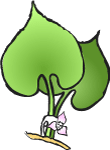Notes from the Medicine Garden
“Working in a beloved garden provides a healing experience for mind and body. Tedious tasks transmute into rhythms conducive to reflection amid the smells of earth and green. Nourishing the garden while taking nourishment from it continues the cycle of life which sustains all living things. By consciously and willfully entering this reality we direct the flow of life, if only in our garden. It is a space and time in which we can ponder our impact upon the wider garden of Earth.”
Chapter: Weeds Are Treasures.
– Let weeds grow at least 8 inches high so they are easy to pull. At that size they are also packed with nutrients and are more valuable returned to the soil as “green manure”. Chop them up and dig them in. Observe the discarded weeds in the days following as even snippets of some weed roots will start new plants. Quack grass is an example. The roots are easy to spot however looking like pieces of straight white string. This aggressive grass, with patience, often can easily be pulled intact from its extensive network.
– Another option is to lay the weeds along side the plants as you pull them up. They will provide mulch (ground cover) which helps to retain soil moisture around the plants. In time they will break down and return to the soil. Woody stems may remain until the following season unless cut into smaller pieces. Examples are mullein and burdock. To avoid more weeds growing in the same area pull them before their seed heads mature. Again observe the garden from day to day as some weeds will continue to develop seeds and release seeds even if the plant has been pulled or cut, if the seed head is already far along. Dandelion is an example.
– If the weather is very hot consider letting the weeds grow around the plants but cut them back so they are shorter than the plants. Place the trimmings around as mulch. The shorter weeds will continue to grow and pull nutrients from the soil which will be returned to the soil when cut again. However leaving the roots to grow avoids disturbing the soil thus retaining moisture and organism colonies. This is especially useful with tap root weeds like dandelion, dock or burdock. At the end of the growing season cut the weeds back to ground level. They may die out over winter adding to the soil nutrients, or they may come back in spring. If desired dig them and chop them up adding to the compost pile. If chopped and left in the garden they may grow back multiplied.
– Before planting in the beginning of the season, let the weeds grow several inches. Till them under as green manure. Then sow a cover crop such as buckwheat or clover and till that under when it starts to bloom. This will enrich the soil for planting.
– Another use for weeds is to chop them into buckets filling the bucket half full. Add rain water, or well water, and let them sit for a day in the sun. Strain out the weeds (use an old piece of cloth or recycle a kitchen sieve that has seen better days). Use a sprayer to apply the weed tea to plants or pour around them. Spraying the tea directly on the leaves gives the plants a quick boost as they take in nutrients through their leaves.
– Enrich this weed tea with a concentrated kelp solution stirred in. This will provide minerals that may be in short supply in the soil.
– Observe the weeds before tilling or planting. They will tell what the soil needs. If weeds are pulled out and taken away that will deplete the soil over time. Use weeds from other areas to replenish the soil in areas where the weeds are thin, weak, pale green or yellow in contrast to the same species growing well somewhere else.
– Large leaves of lush burdock, comfrey or the succulent stems of these and thistle can be chopped up in large quantities and spread over soil before tilling in, or working in by hand in the exact spots where plants or seeds will be put in. Such large plant chop can also enrich a compost pile but alternate layers of it with dry plant material or clean scrap paper as well. Use an old meat cleaver and a scrap of wood board on which to chop. Using weeds to feed the soil and plants is a way for those who choose not to use animal manure for fertilizer.

